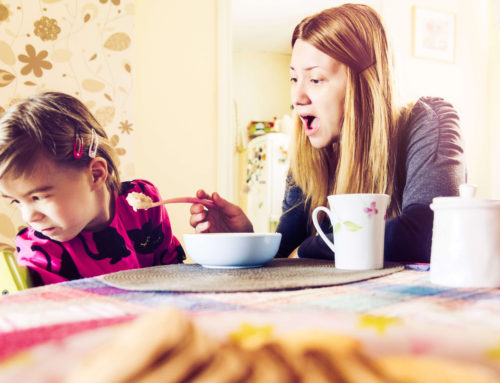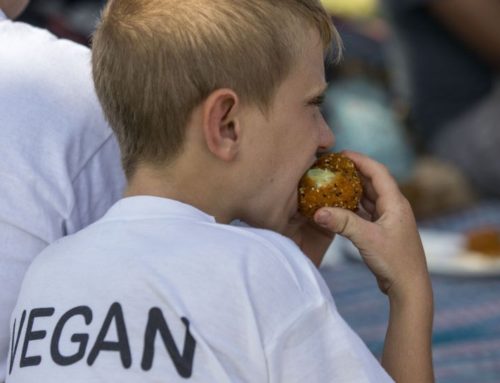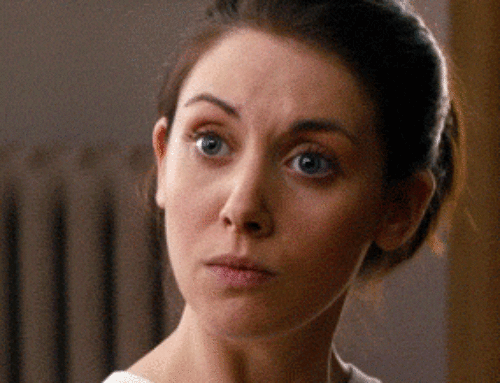From Rodale’s Organic Life, 9/13/17
You read books about sleep before your baby is even born. You get advice, solicited and unsolicited, from family members and strangers. You share tips about hairdryers, sound machines, swaddling methods, and diet changes at every parents’ group. You read blogs on blogs on blogs. Maybe you hire coaches. So, of course, if your kid doesn’t become a “great sleeper,” you assume that you’re to blame. The thing is, in some cases, you’re not.
According to American Family Physician, 1-5 percent of children suffer from obstructive sleep apnea, up to 50 percent experience parasomnias (sleepwalking, night terrors, sleep talking, etc.), 7 percent have delayed sleep phase disorder (where sleep and wake times are off by at least two hours), and 2 percent have restless legs syndrome. Many of these conditions have physical causes that have nothing to do with how many books their parents read.
HOW MUCH SLEEP DO KIDS NEED?
The National Sleep Foundation recommends 11-14 hours for toddlers in a 24-hour period (including naps), 11 to 13 hours four ages 3 to 5, and 9 to 11 hours for ages 6 to 13. The American Academy of Pediatricsrecommends that teens 13-18 get no less than 8 hours of sleep each night.
WHAT CAN INTERFERE WITH KIDS’ SLEEP?
Work and school schedules, irregular routines, and poor sleep hygiene (ie, too much screen time) can contribute to kids not sleeping enough. But sometimes, even after you’ve made sure you’re limiting screen time and dialing down the thermostat (here are 50 ways to sleep better tonight), your kid still might struggle to sleep through the night. At that point, you should explore whether the problem might be a sleep disorder.
HOW DO YOU KNOW IT’S A DISORDER?
“We did sleep training with Will probably three or four times, and then we realized it was just an utter failure,” Brooklyn mom Amanda Braddock said of her son, who was waking up four or five times a night well into his toddler years. At first, her pediatrician said this was nothing to worry about, but when he was 2 1/2, she sent them to an ear, nose, and throat doctor.
“The ENT took about a two-second look at Will’s tonsils and said, ‘They’re enormous, they need to come out,’ ” Braddock said. Tonsil size alone isn’t enough to prove there’s a problem such as sleep apnea present, so they did a sleep study.
The results showed Will was waking up about 12 times a night, not just five, and he stopped breathing for a few seconds about three or four times a minute. The diagnosis of obstructive sleep apnea shed a new light on everything about Will’s first three years. He was getting sick twice a month and didn’t like to run and climb at the playground like his peers. Now his parents understood why.
Dr. Sally Ibrahim, a sleep specialist at the Cleveland Clinic, said there are a number of clues to watch for if you suspect your kid has a sleep disorder:
Gagging, an arching back, poor weight gain
In a baby, this could mean reflux or feeding difficulties are causing early sleep problems.
Heavy mouth-breathing or snoring
“Any time that [breathing] is noisy and looks more labored than it should be, they probably need to be looked at,” Ibrahim said. “I had a father tell me, ‘No that’s normal, babies snore.’ But snoring is not normal in any age group. It’s a sign of turbulent flow, which means that it’s not smooth airflow.” Sometimes that’s caused by congestion, from a cold or allergies. (Here are 3 natural ways to soothe a sore throat.) Sometimes it’s obstructive sleep apnea, caused by enlarged tonsils and/or adenoids.
Complaints of pain in the legs, or an urge to move legs in the evening
This is hard for younger children to articulate, but when older children do, it could mean restless leg syndrome.
Difficulty waking up
“If a child gets enough hours of sleep, they should not have any difficulty in waking up,” Ibrahim said. “They shouldn’t appear groggy and hard to get going in the morning.” If your child is going to sleep late, that’s a different story, but grogginess after the proper number of hours for their age means the quality of their sleep is being compromised.
Trouble at school
Sleep disorders can cause young children to be irritable and lack focus. “Lack of sleep and sleep apnea can mimic ADHD symptoms,” Ibrahim said. “It can be very hard to tease those two apart. ADHD kids can look like apnea kids in terms of their behavior and how they perform.”
Adolescent obesity
Sleep apnea in older children has been associated with metabolic syndrome — high cholesterol, high blood pressure, and insulin resistance.
PARENTS, YOU’VE GOT HOMEWORK
After you relate this information to your child’s pediatrician, the doctor may send you either to an ENT or to a sleep specialist. You can do some homework in advance to answer questions such as:
What is your child’s bedtime routine?
If the child lives in more than one household, are there different routines in each home?
What foods do they typically eat? What do they eat before bed?
What beverages do they consume? Do they typically drink anything with caffeine?
Sometimes, Ibrahim has parents record a two-week log in order to get a better picture of his/her average sleep patterns.
It may be helpful to take a video of your child snoring or exhibiting any parasomnia to show to the doctor. “We had a recent case of one person who brought in videos that made me think more of a seizure instead of just a sleep-walking episode,” Ibrahim recalled. “Just the video prompted me to get more evaluation.”
WHAT TO EXPECT FROM THE SLEEP STUDY
While you may know adults who have brought home sleep study machines to test for apnea, children still have to do theirs in a sleep lab to make sure they don’t remove the tubes or otherwise mess with the data. Brace yourself for a challenging night. You child may not understand why he has to sleep in a strange place with a cannula up his nose, and, yeah, you’re there because he doesn’t sleep well in the first place.
“That first hour may be very difficult while they’re trying to relax and get to sleep,” Ibrahim cautioned. “But they eventually fall asleep, and we do get data. They make wake up more than they usually would, but we still get information.”
Ibrahim advised doing whatever you can to keep your child active that day, so he’s tired by the time you get to the lab.
“When we took Will, we told him he had to stay overnight at the center because it was a superhero sleep study, and they had to figure out which superpowers he had,” Braddock said, but while her son seemed okay with that, the sight was frightening for her. “I have a photo of his little face. They put tubes all over his body and into his head. He had a net cap over his head. He looked like a scary alien ninja.”
TREATMENT OPTIONS
Once you have the data in, it’s time to make some decisions. Enlarged tonsils and adenoids are the most common cause of sleep apnea in children, and they’re also relatively uncomplicated to remove. Sometimes kids go home the same day of their surgery, though because of his sleep apnea Will was kept overnight so doctors could monitor him. That’s also why he could not have anything stronger than Tylenol after the procedure, and Braddock said he was screaming in pain for a solid hour. That, it seems, was the worst of it.
“What was pretty miraculous was after that period, he recovered very quickly,” Braddock said. “He was a little bit rough for about one day after that and then he was back to himself.”
In mild cases of sleep apnea, you could have the option to wait and see if your child grows into her tonsils. “Neurocognitavely, there was a study done looking at early tonsillectomy versus watchful waiting, and it turns out that if you wait six to nine months, kids are fine, nothing happens to them,” Ibrahim said. She does not recommend that approach in moderate to severe cases, however. The consequences — such as attention and behavior problems, and metabolic syndrome— aren’t worth it.
Your doctor may be able to try allergy medication or an orthodontic device to fix a mild case of apnea. Obesity is sometimes the cause of sleep apnea in older children and adolescents. Their treatment might involve a weight-loss plan as well as a CPAP machine to assist with breathing at night.
If your child moves her legs five or more times an hour during the sleep study, her diagnosis is probably restless legs syndrome, which is a lot less straightforward to treat. Sometimes that’s the result of an iron deficiency, solved with supplements. Sometimes it’s either too much or too little physical activity. But sometimes it’s just genetic. There are no approved medications to cure the syndrome at the moment. (But there are 14 natural fixes for restless leg syndrome that may help.)
The treatment for a delayed sleep phase disorder, in which your kid goes to sleep and wakes up too late, may involve light therapy, in addition to a gradual adjustment of bedtime. Ibrahim says that melatonin “used cautiously” may help with this as well. There have been no long-term studies of the synthetic hormone’s effect on children, and the potency of the over-the-counter supplement is inconsistent, so consult your doctor before trying it.
Once the doctor has ruled out seizures, apnea, and other breathing problems such as asthma, there isn’t much you can do medically to stop sleepwalking, night terrors, bedwetting and other parasomnias. What you can do is take measures to make sure your child is safe (gates on stairs, no top bunk beds).
Will’s recovery after surgery is a best-case scenario. “About a month later, maybe even less, he was changed,” Braddock said. “He would sleep really soundly. He’s not sick twice a month like he used to be. The most amazing change is his physicality. He actually started running and jumping and climbing on the jungle gym. Now he’s caught up, and he’s a very normal, physical kid.”





